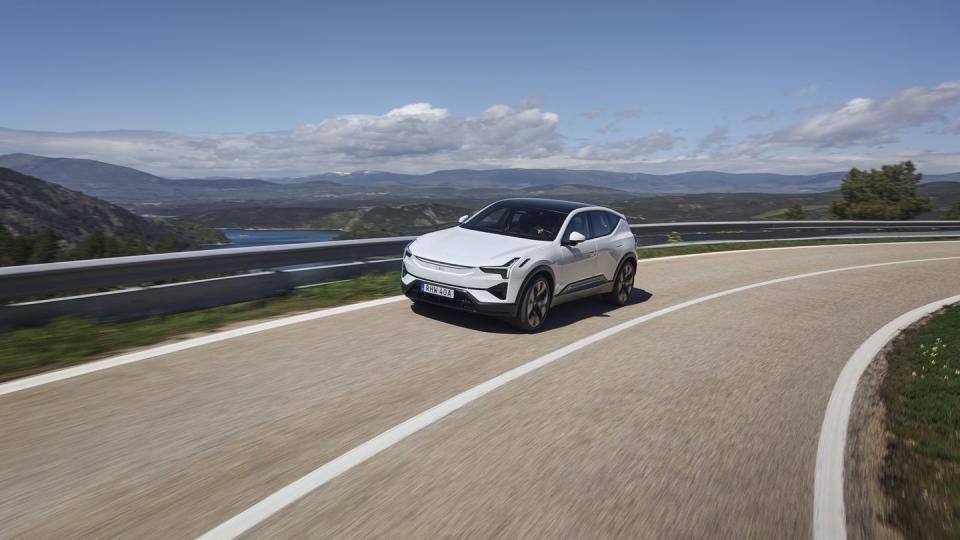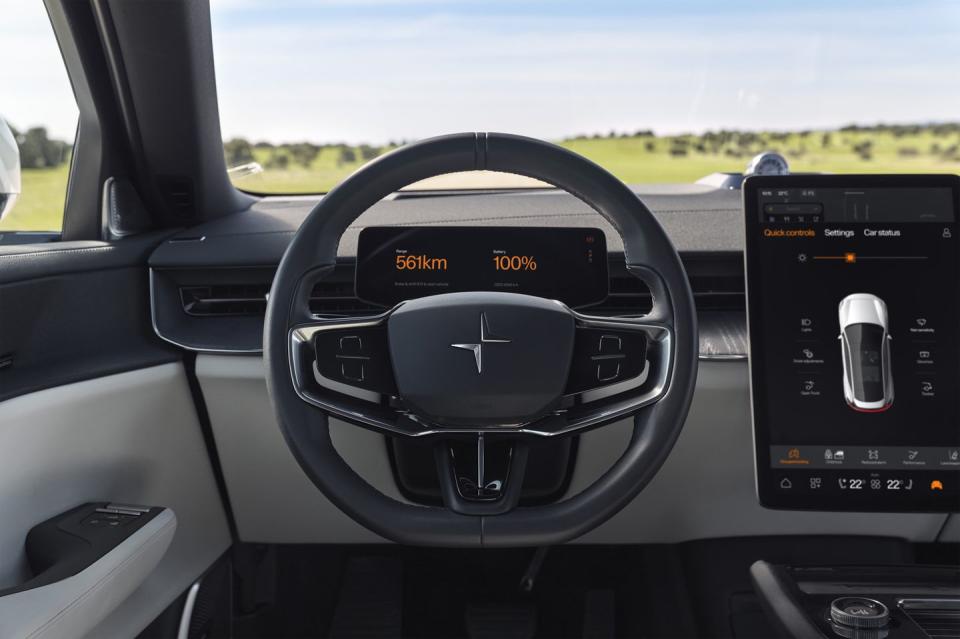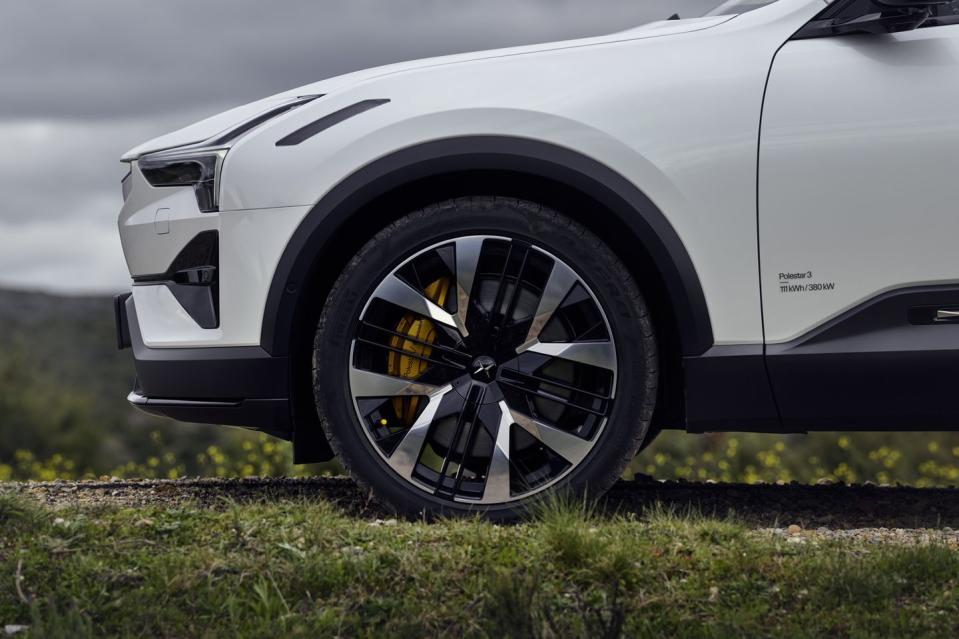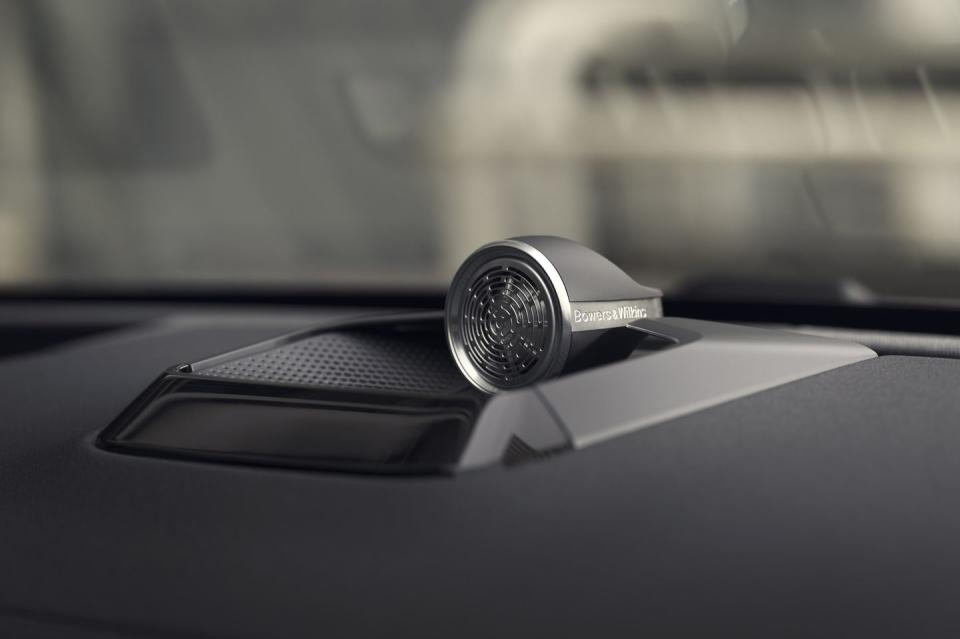2025 Polestar 3 Blends Agility, Technology, and Sleek Design

When Polestar separated from Volvo in 2017, its mission wasn't entirely clear. Once Volvo's in-house tuner, Polestar aimed to morph into a stand-alone electric performance brand. But its first venture, the $156K Polestar 1, was actually a hybrid adapted from a 2013 Volvo concept. Its first EV, the Polestar 2, moved the marque into mainstream territory but borrowed from a four-year-old Volvo concept and shared a platform with Volvo's gas-powered cars. Volvo then began releasing its own EVs, muddying Polestar's position further. Now that Polestar is finally joining the burgeoning electric luxury SUV segment with the Polestar 3, which rides on a new EV-only architecture, the brand's vision is coming into focus.
The Polestar shares the SPA2 platform with the upcoming Volvo EX90, but the 3 prioritizes a sportier character while the EX90 leans towards practicality. The 3 is sleek and low slung, measuring 5.4 inches shorter from nose to tail and 4.7 inches less tall than its Volvo cousin. The smaller dimensions mean the Polestar eschews the third row of seats that make the EX90 more of a family hauler.
The 3 also packs more oomph. We drove a Long Range Dual Motor version around Madrid and the surrounding countryside; the Launch Edition spec included the Plus and Pilot packages as standard. The example we drove didn't have the Performance package, however, with the non-Performance dual-motor all-wheel-drive setup producing 483 horsepower and 620 lb-ft of torque instead of the maximum 510 horses and 671 lb-ft. While Volvo buyers can chose the Performance powertrain on the EX90, the Volvo's base spec is slightly more pedestrian at 402 horsepower and 568 lb-ft.

Even without the Performance package, the Polestar 3 feels lively, with a claimed zero-to-60-mph time of 4.8 seconds. (The Performance upgrade, a $6000 premium, knocks off three-tenths.) But with nearly 6000 pounds to haul, the 3 doesn't have the same neck-snapping acceleration of some other EVs. Instead, speed builds in a linear fashion, giving the impression that the Polestar won't run out of breath as you go faster. Performance pack versions get more aggressive accelerator mapping, but the standard powertrain is rapid enough.
The Polestar isn't just about power, however, distinguishing itself with its handling poise. The standard steering setting is light, which was welcome on Madrid's narrow city streets. But on curvier roads, we set the steering to Firm, and while the added heft feels slightly overdone and artificial, the weight combines with the wheel's responsiveness to boost confidence. The steering feels fluid and direct, so while the 3 isn't super-communicative, it feels dialed in for an electric SUV.

The 3's ability to flow through corners with grace is aided by a mechanical twin-clutch torque-vectoring rear differential, which is capable of sending the rear motor's full torque output to either wheel. You can feel the differential subtly overdriving the outside wheel to assist with turn-in and fend off understeer, creating a sense of stability at speed. The SUV scoots through bends with more precision than expected. With a control-arm front suspension that feels sharp and athletic, the Polestar's pointy front beak sniffs out corners with enthusiasm.
Dual-chamber air springs and adaptive dampers help the 3 ride smoothly, albeit on Madrid's glassy roads. We wondered how its composure would hold up on Michigan's broken pavement. While the Firm setting is definitely stiffer, it wasn't unbearable. Still, the standard setting does an excellent job of keeping body roll in check at higher speeds, so Firm isn't necessary for brisker driving.

All Polestar 3s are fitted with Brembo performance brakes, but we mostly relied on the regenerative braking, which offers three levels. The strongest setting isn't quite as aggressive as in other EVs—when you lift off the accelerator, it provides plenty of slowing power but won't send your passengers lunging forward, straining against their seatbelts. A creep function can be activated for low-speed crawling, even with the full one-pedal regen turned on.
On the highway, we trialed the Pilot Assist system, which uses cameras and sensors that sit in the "SmartZone," a trim piece where the grille would be. The system uses adaptive cruise control to maintain a safe distance from other cars, steers the SUV within its lane, and will execute lane changes when prompted. Its steering inputs mostly felt confident, but there were some instances of less assured driving during lane changes. A more advanced Pilot pack with lidar will also be available.

The 3's 107.0-kWh battery is good for a claimed range of 315 miles, with the Performance pack reducing that to 279 miles. The slippery bodywork uses wings, both in the hood and over the rear hatch, to achieve a coefficient of drag of 0.29, and the SUV can decouple the rear motor to preserve energy. When it's time to plug in, the 3 will charge at up to 250 kW, going from 10 to 80 percent in a claimed 30 minutes on a DC fast-charger. Plugging in at home with the 11.0-kW onboard charger will fully replenish the battery in approximately 11 hours.
While the charging speeds are on par with Tesla, they don't lead the EV pack, and owners will end up spending time waiting at charging stations. Luckily, the cabin is well appointed, with a clean design that feels simple but purposeful. There are high-quality materials, with rich wood trim along the dashboard and an array of upholstery choices, from nappa leather to wool to faux leathers made from recycled plastic. A glass roof prevents the sloping roofline from making the rear seats feel claustrophobic, although it encroaches on cargo space.
The Polestar 3 is geared toward a tech-proficient customer. The center console's only physical control is the volume knob, which also serves as a play/pause button. Everything else is handled by the 14.5-inch touchscreen, which crisply renders the easy-to-use Android Automotive–based infotainment system. Crucial information is also ported over to the 9.0-inch digital gauge cluster and a head-up display. Polestar provides shortcuts to simplify navigating the screen, but it still isn't as intuitive as physical buttons. Still, the Polestar 3 offers only a physical camera mirror and retains physical air-vent controls, unlike the upcoming rear-window-less Polestar 4 with its screen-based vent adjustment.

The seats are plush while remaining supportive and well bolstered, and they come heated as standard. There's a wide range of adjustment, controlled via a unique square dial that can be toggled in a multitude of directions. A button in the center changes what is being adjusted—seat positioning, tilt and lumbar controls, bolstering. The instinctive knob doesn't require the screen to cycle through functions. The optional 25-speaker Bowers & Wilkins sound system, part of the Plus pack, features impressive levels of customization and Dolby Atmos spatial audio. But Dolby Atmos is not yet available with Spotify, instead requiring the built-in Tidal app.
Polestar 3 pricing starts at $75,300. While the initial batch will be built in China, production will soon begin in South Carolina, which should net the SUV some tax incentives, although the batteries will still come from China. As for competitors, Polestar says it's targeting both gas-powered luxury SUVs such as the Porsche Cayenne and EVs such as the Mercedes-Benz EQE SUV.
Those brands both have the benefit of long-established positioning. The Polestar 3 will attempt to make a place for the nascent brand, by dint of its punchy performance, nimble dynamics, and sharp but clean design.
You Might Also Like

 Yahoo Autos
Yahoo Autos 